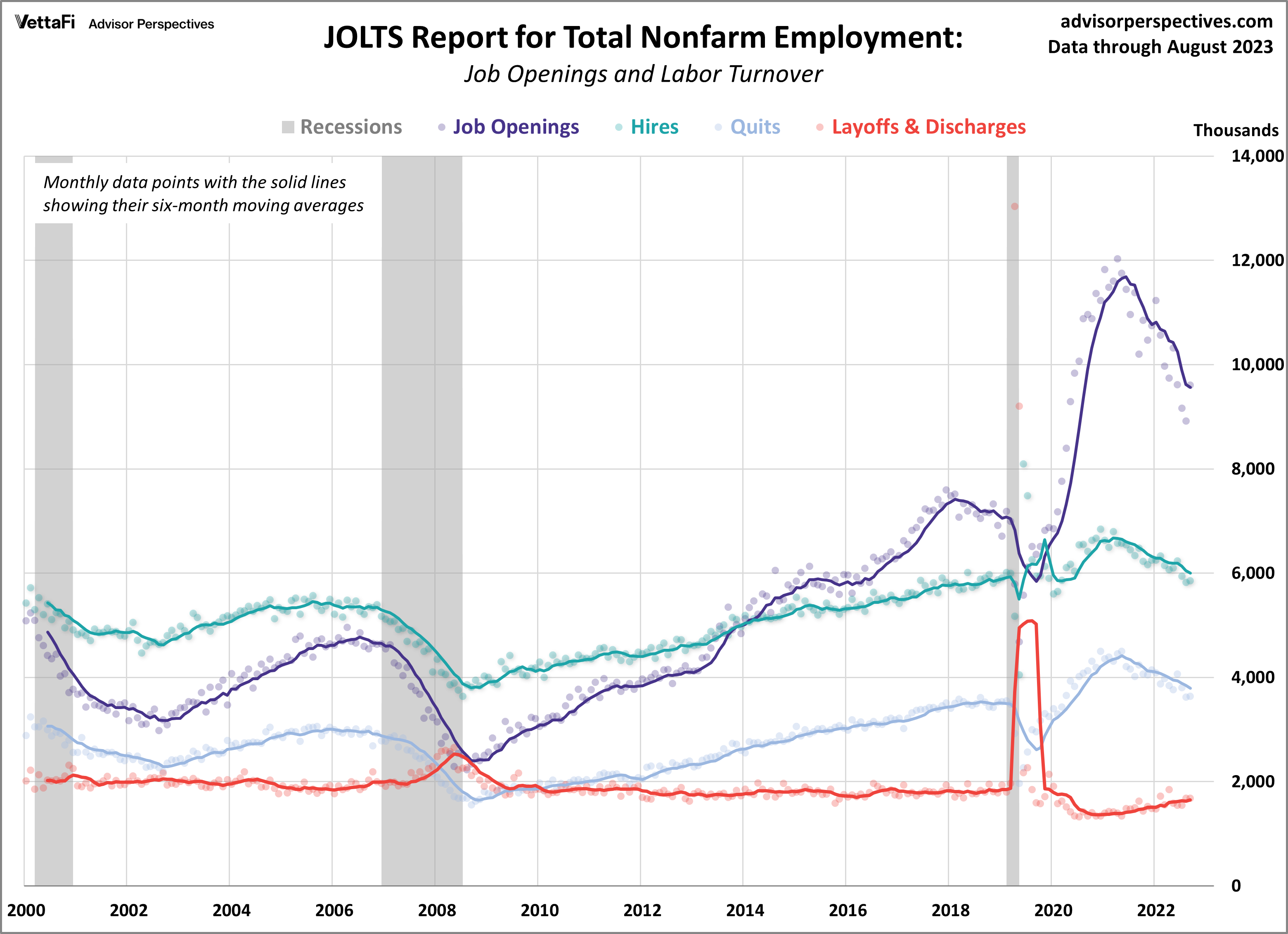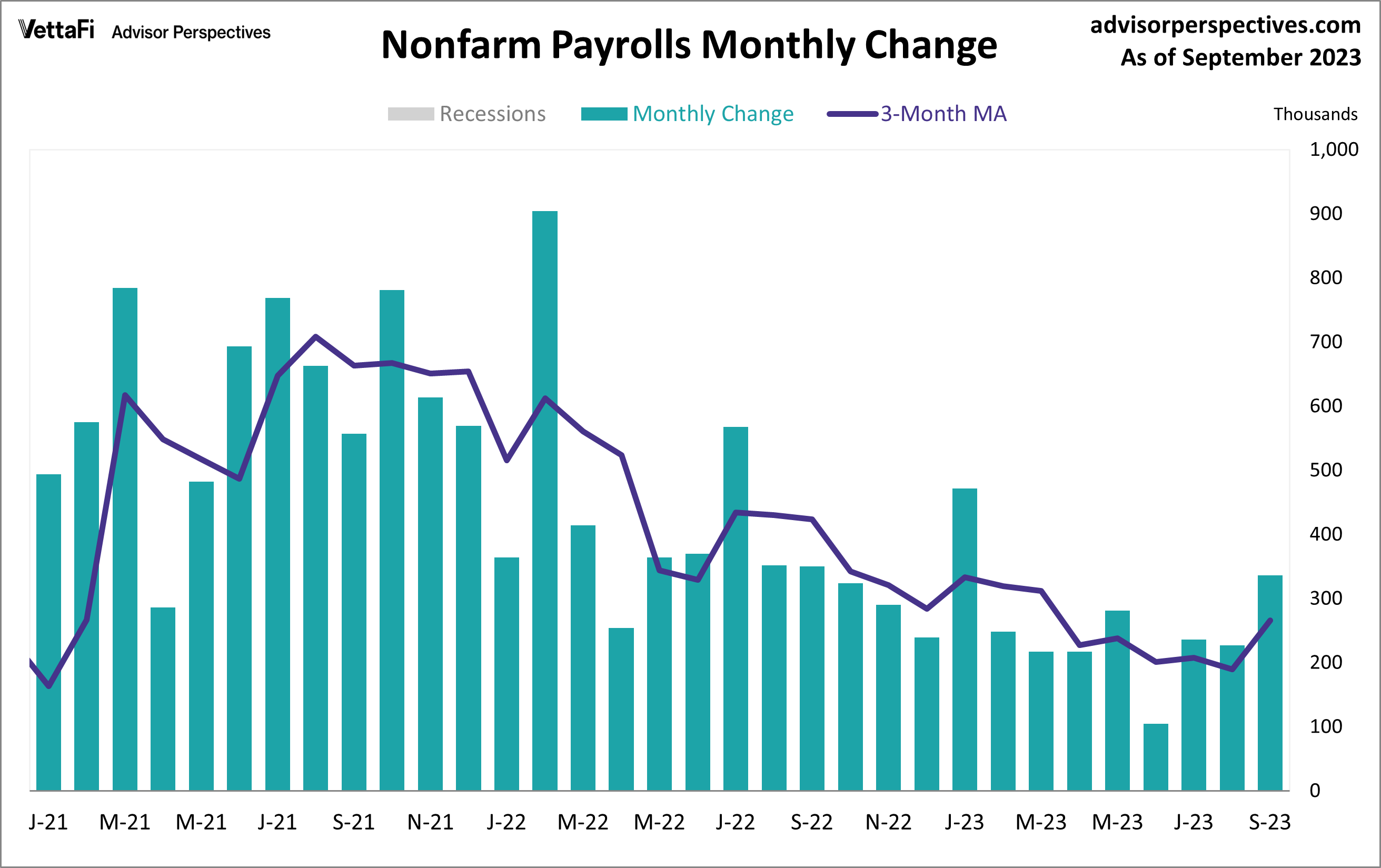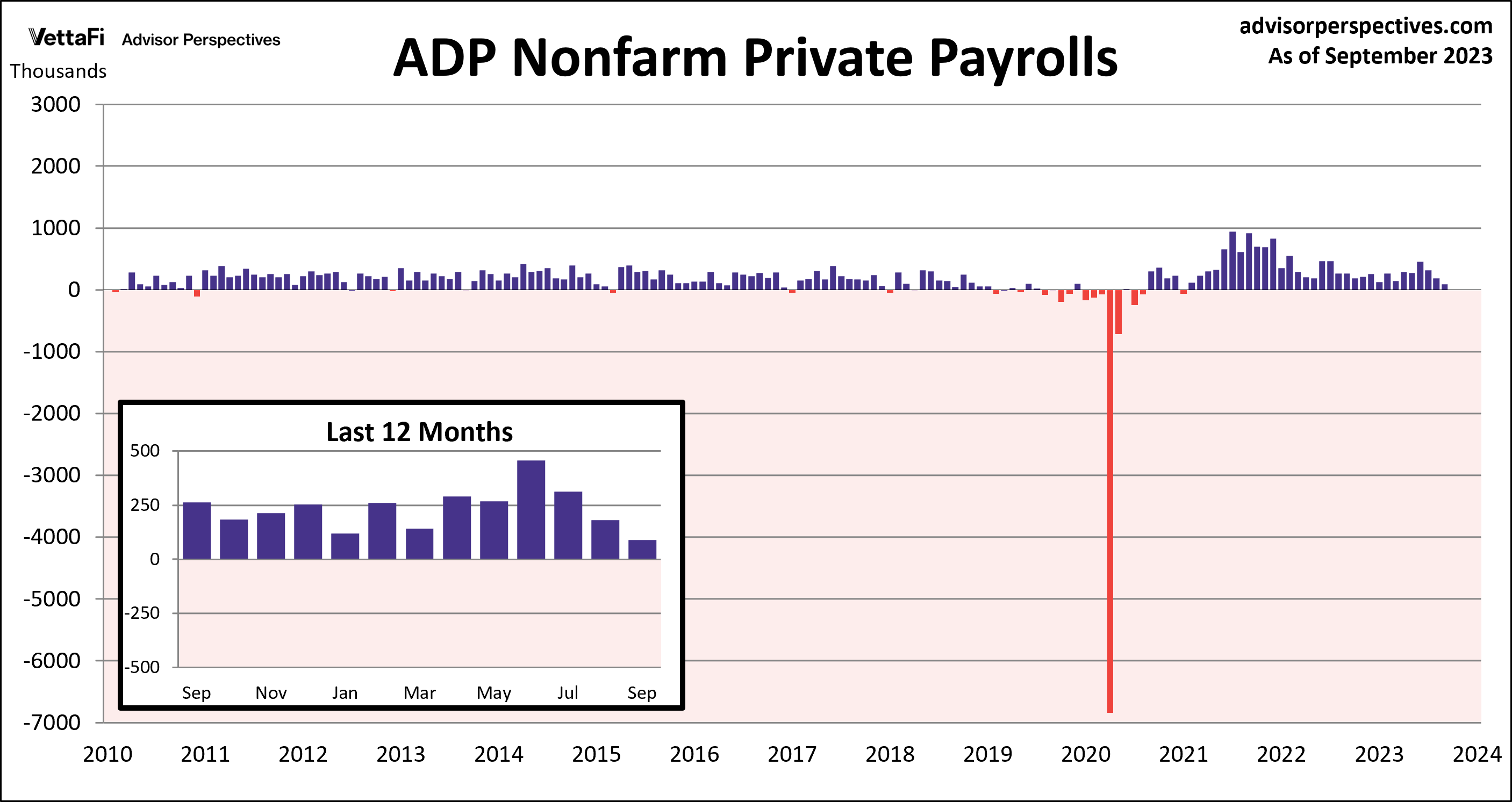Economic indicators provide insight into the overall health and performance of an economy. They serve as essential tools for policymakers, advisors, investors, and businesses alike. Those indicators enable them to assess the current state of the economy, make informed forecasts, and consequently, make sound decisions. This data holds the power to influence business strategies and financial markets significantly. In the week ending on October 5, the SPDR S&P 500 ETF Trust (SPY) fell 0.70%, while the Invesco S&P 500 Equal Weight ETF (RSP) was down 2.04%.
The labor market took center stage last week with the release of several key reports. It began with the release of the Job Openings and Labor Turnover (JOLTS) report on Tuesday. That was followed by the ADP Employment Report on Wednesday, and culminated with the BLS Employment Report on Friday. These reports offer unique perspectives, each focusing on different aspects of the U.S. labor market.
Job Openings and Labor Turnover (JOLTS)
The August JOLTS report unveiled hotter than expected labor market, despite the Federal Reserve’s efforts to curb economic growth. In August, job openings rose by almost 700,000 from July, reaching 9.610 million. This recent uptick caught economists off guard. They had anticipated a fourth consecutive monthly decline, with vacancies expected to drop to 8.800 million. Other data points revealed the number of hires, quits, and layoffs remained relatively stable compared to the previous month.
The JOLTS data serves as a crucial barometer for assessing labor demand. It also reveals that any disparity between workforce demand and supply could potentially exert upward pressure on inflation. The latest report reflects a resilient labor market. But it is noteworthy that the number of job openings per unemployed worker decreased to 1.51. This marked the lowest level in nearly two years. Moreover, the overall trend in job openings continues to exhibit a sustained decline that began in early 2022.

Employment Report
The strength of the U.S. labor market was on full display. The latest jobs report potentially paved the way for another Fed rate hike later this year. The September employment report revealed 336,000 jobs were added last month, almost twice as much as the expected 170,000 addition. September’s jobs numbers were the largest monthly increase since January. This raises concerns that the labor market may not be cooling down as the Fed had hoped, potentially leading to a resurgence in inflation. Moreover, the report indicated that the unemployment rate remained at 3.8%, while wage growth slowed to 4.2%. The labor force participation rate held steady at 62.8%, its highest level since February 2020. Overall, the jobs report was strong, highlighting the economy’s resilience despite various challenges, such as rising interest rates, labor strikes, the resumption of student loan payments, and uncertainty in Washington.

ADP Employment Report
Private sector hiring continued to slow in September, a possible indication that the Fed’s interest rate hikes are starting to take effect on the labor market. In contrast to the strong JOLTs and BLS report, the ADP employment report painted a weaker picture, revealing the addition of only 89,000 private jobs last month — the smallest monthly gain since January 2021. The latest figure was well below the projected 153,000 jobs and marked the third consecutive month that private job growth has slowed. Notably, the downturn was most pronounced among larger companies with more than 500 employees, shedding 83,000 jobs in the past month, effectively erasing the gains they had made in August.
Another significant detail from the report was the continued deceleration of annual pay growth, which has now persisted for a 12th consecutive month, settling at 5.9%. The slowing growth in both private sector pay and job numbers serves as a positive signal for the Federal Reserve, suggesting that inflationary pressures, such as wage gains, are easing.
Economic Indicators and the Week Ahead
Next week, the economic landscape will be shaped by indicators that shed light on both inflationary trends and sentiment within the economy. The Consumer Price Index (CPI) and Producer Price Index (PPI) will be closely watched to determine whether the recent resurgence in inflation remains a persistent concern. Present forecasts suggest that both headline and core CPI are expected to exhibit a 0.3% increase from August. Additionally, expectations indicate that the headline PPI may have risen by 0.4%, while core PPI by 0.2%.
At the same time, the Michigan Consumer Sentiment and NFIB Small Business Optimism surveys will provide the latest perspectives on the prevailing sentiments among consumers and small business owners, helping to gauge overall market confidence and economic sentiment. The preliminary report for the Michigan Consumer Sentiment Index, which could impact interest in the Consumer Discretionary Select Sector SPDR ETF (XLY), is predicted to inch down from September’s final reading of 68.1 to 68.0. Lastly, the NFIB Small Business Optimism Index will reveal if concerns among small business owners remain subdued.
For more news, information, and analysis, visit the Innovative ETFs Channel.









